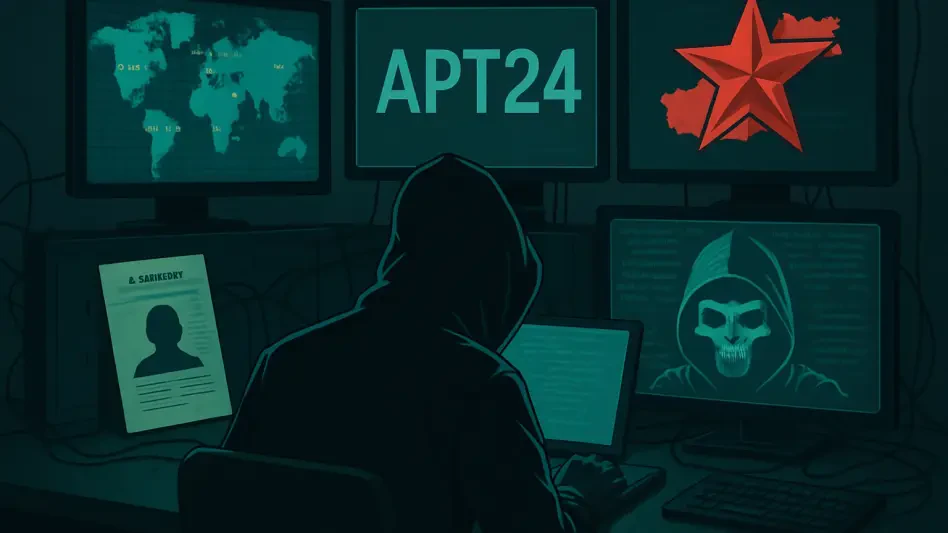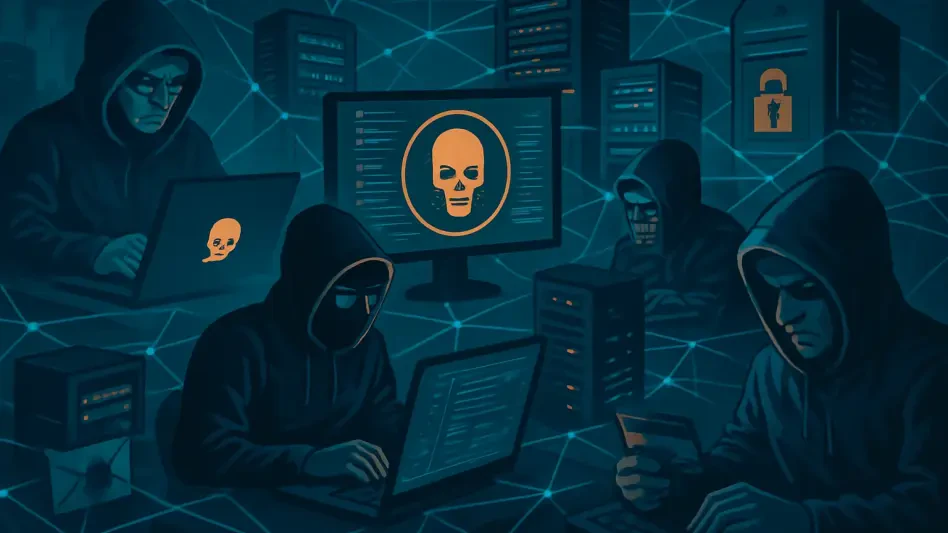In an age where the sophistication of cyber threats continues to escalate unabated, organizations of all sizes are grappling with the daunting challenge of fortifying their digital defenses. The urgency with which businesses need to develop and implement robust cyber incident response plans has reached critical levels, as the repercussions of not doing so can be devastating. Recent statistics reveal an alarming trend: over 80% of small and midsized organizations report having experienced a cyberattack within the last year, resulting in staggering restoration costs that invariably reach the million-dollar mark for many. This unfortunate reality underscores the increasing vulnerability of such entities and highlights the dire necessity for efficient response strategies that mitigate damages swiftly and effectively.
The Threat Landscape and its Impact
Small and Midsized Organizations Face Significant Vulnerabilities
Small and midsize organizations, often considered the backbone of the global economy, face heightened vulnerability due to limited resources dedicated to cybersecurity. These organizations frequently lack the necessary infrastructure to fend off complex cyberattacks, turning them into prime targets for cybercriminals. With attacks becoming increasingly sophisticated, the repercussions extend beyond financial losses, impacting reputation and stakeholder trust. The lack of incident response plans further exacerbates this issue, with data suggesting a significant number of companies are unprepared for the complexity of modern cyber threats, which contributes to prolonged breaches and increased damage.
Further illustrating the gravity of the situation is the significant growth trajectory of the global incident response market. This market has ballooned from $11.05 billion, with projected expansion reaching $33.76 billion by the year 2027. Such rapid growth primarily reflects a heightened awareness among organizations and an acknowledgment of the dire need for effective incident response strategies. However, despite these alarming statistics and expanding market opportunities, only about 45% of companies have established response plans. This preparedness gap poses considerable risk, as identifying and containing breaches currently averages a staggering 277 days, unnecessarily extending exposure and potential damage.
Complexity and Challenges of Modern IT Environments
As organizations expand and integrate more digital components into their operations, the complexity of IT environments naturally increases. This intricacy presents substantial obstacles for cybersecurity professionals tasked with incident response. With numerous interconnected systems and applications, pinpointing the origin of an attack becomes a formidable task. The interconnected nature of systems means that an entry point in one part of the network can lead to vulnerabilities in another, cascading into widespread implications. Furthermore, the dynamic nature of these environments often involves coordinating responses across different departments and geographical regions, adding layers of communication and logistical challenges that can delay essential actions.
A pivotal challenge in incident response is the need for speed and precision. The time-sensitive nature of cyber incidents demands rapid resolution to avert damaging consequences such as operational downtime, financial setbacks, and harm to corporate reputation. However, constrained budgets and an acute shortage of skilled cybersecurity professionals exacerbate this challenge, leaving many organizations inadequately prepared to mount an effective defense. As cyber threats evolve, the demand for swift incident response capabilities only intensifies, necessitating innovative solutions that can streamline processes and bolster cybersecurity defenses.
Building an Effective Incident Response Framework
Employing Tried and Tested Frameworks
The foundation of an effective incident response strategy often lies in adopting established frameworks that have proven successful across various organizations and industries. The National Institute of Standards and Technology (NIST) offers a robust four-step process that includes Preparation, Detection and Analysis, Containment/Eradication/Recovery, and Post-Incident Activity. This framework encourages a proactive stance, emphasizing continuous improvement cycles where lessons learned from past incidents feed into future preparedness. Alternatively, the SANS framework delineates a more granular six-step approach, which underscores the importance of having dedicated incident response teams and refined processes. Aligning practices with comprehensive guidelines such as the ISO/IEC 27035 standard ensures adherence to international norms, facilitating comprehensive coverage from detection through post-incident analysis.
Regardless of the framework selected, certain core principles are fundamental to successful incident response strategies. Organizations benefit significantly from forming cross-functional Computer Security Incident Response Teams (CSIRTs). These teams, comprised of diverse professionals spanning management, technical roles, legal advisement, and communications, underpin effective incident management. Defining clear roles and responsibilities within these teams ensures cohesive and timely actions, crucial during any incident. Building robust incident response capabilities extends beyond team assembly; it encompasses fostering a security-aware culture where employees are well-trained and systems are fortified through regular assessments and monitoring.
Communication, Coordination, and Continuous Improvement
Effective communication is pivotal to a successful incident response. Organizations must strive to establish standardized procedures that mitigate confusion, minimizing the chance of miscommunication or delay during critical moments. Centralized communication platforms can be leveraged to ensure timely dissemination of information, preventing overshadowed issues, redundant efforts, and conflicting data flow. The risks inherent in manual processes, such as handoffs between entities that can introduce errors, highlight the value of automation. By implementing automated tools, organizations streamline processes, simultaneously reducing human error and accelerating response times.
Moreover, evaluating performance through key performance indicators like Mean Time to Detect (MTTD) and Mean Time to Acknowledge (MTTA) allows organizations to gauge effectiveness and identify areas for enhancement. Such metrics provide invaluable insight into detection and response agility, promoting a culture of continuous improvement. Despite awareness of these strategies, obstacles persist, especially with alert fatigue. The sheer volume of notifications can overwhelm teams, leading to missed incidents. Distinguishing critical alerts from non-essential noise becomes a priority, as does allocating resources judiciously to maintain a dedicated incident response focus without compromising operational integrity.
Moving Beyond Reactive Measures to Proactive Strategies
Ongoing Training and Preparedness
The onus is on organizations to transition from merely reactive to proactive incident response strategies. This shift involves regular drills and simulations to test and refine their procedures. Such practice sessions provide invaluable insights into weaknesses, allowing for targeted improvements. As cybercriminals perpetually advance their tactics, the question is not if but when an incident occurs. Preparing for this inevitability is paramount, ensuring that when breaches happen, the impact is minimized, and recovery is swift and effective.
Maintaining preparedness entails cultivating a culture of continuous learning and adaptation. Organizations can expose their teams to a wide range of scenarios, enhancing their ability to respond to diverse threats. Furthermore, leveraging advanced analytics and threat intelligence platforms enables organizations to anticipate trends and adjust strategies accordingly. Such forward-thinking strategies equip organizations to remain agile, preemptively addressing vulnerabilities before they can be exploited, thereby safeguarding operations and stakeholder interests proactively.
A Strategic Advantage in Cybersecurity
Small and midsize organizations, integral to the global economy, increasingly face vulnerability due to limited cybersecurity resources. Often lacking the infrastructure to combat intricate cyberattacks, these entities are becoming prime targets for cybercriminals. As attacks grow more sophisticated, the consequences surpass financial losses, impacting reputation and eroding stakeholder trust. The absence of incident response plans worsens these challenges, with reports indicating many companies are ill-prepared for modern cyber threats. This underpreparedness results in prolonged breaches and escalated damage.
Highlighting the seriousness is the rapid growth of the global incident response market, which has surged from $11.05 billion, with expectations of reaching $33.76 billion by 2027. This growth is largely driven by increased awareness and recognition of the urgent need for robust incident response strategies. Despite unsettling statistics and expanding market prospects, only about 45% of companies have established response plans. Consequently, identifying and containing breaches takes an average of 277 days, heightening exposure and potential damage.








